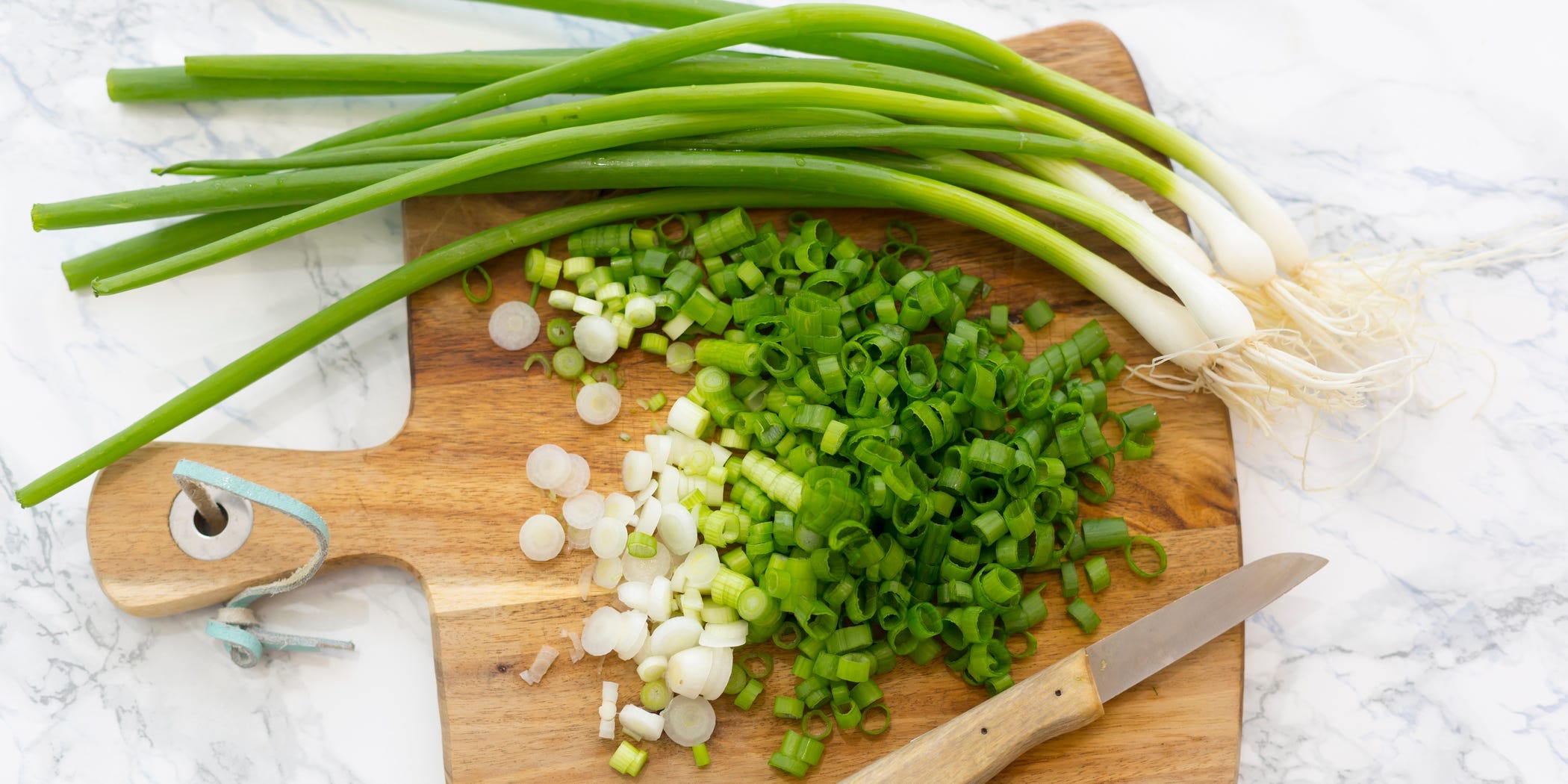
- Green onions and scallions are the same thing and can be eaten raw or cooked.
- Chives are a different plant and are considered an herb and best utilized raw.
- Chives and green onions are both members of the genus allium, which also includes shallots and garlic.
- Visit Insider's Home & Kitchen Reference library for more stories.
Chives and green onions are two well-loved and often-used ingredients across the culinary sphere. And while they've both got slender green shoots and an onion-like flavor profile, chives and green onions each have unique characteristics that make one preferable over the other, depending on the recipe.
Both belong to the allium genus — which also includes onions, leeks, garlic, and shallots — all of which add pungent and spicy notes to savory cooking. But beyond that common thread, chives and green onions have different uses, according to chef and author Laura Pauli of Cucina Testarossa.
Scallions and green onions are the same thing
Just like chickpeas are sometimes called garbanzo beans, or hazelnuts might be referred to as filberts, scallions and green onions are exactly the same thing. How they're labeled is up to the store or farmer who is selling them, says Pauli. Similarly, how they're listed in recipes depends entirely on the author, so you need not worry if the ingredient list specifies "scallions" but your local market only has "green onions."
Regardless of what they're called, green onions (Allium fistulosum) are used in many dishes, from starring as the main ingredient in Chinese scallion pancakes, building another layer of flavor in savory baked goods, or adding a pop of color to a tray of enchiladas.
Their tender green shoots have a milder flavor than their thicker white stem near the roots, and can be eaten raw or cooked. "They have a sharp, fresh flavor, very similar to an onion or shallot," says Pauli. "The white part is stronger than the green stalks and can be used as a replacement for onions in a recipe." Grilling, sauteeing, or roasting them can help reveal their earthy sweetness, while the addition of fresh green onions adds depth, crunch, and a notes of onion without as much bite.
Green onions vs. chives

Chives (Allium schoenoprasum) are certainly related to green onions but have a distinctly different look. Their tapered, slender shoots are solid green from root to tip, and nearly the entire length of the chive is used. Unlike green onions, which stand up well to various cooking methods, chives are much more delicate and are best served raw or ever-so-slightly cooked.
"While [green onions] are considered a vegetable, chives are considered an herb and are really used as such," says Pauli. Finely chopped chives are a popular garnish for a fully-loaded baked potato, French omelets, or caviar-topped blinis, adding a subtle onion flavor and pop of color. Fresh chives can also be included in dips and dressings to add some complexity, or added to soups and stews just before serving.
Substituting green onions and chives
"Green onions, especially the white section, are more of an integral part of a recipe, so a chive wouldn't be sufficient for a substitution," says Pauli. On the other hand, if a recipe calls for chives and you only have green onions on hand, you can use the dark green parts of the stem as a suitable replacement by slicing them very thinly and adding them to your dish.
Insider's takeaway
Chives and green onions (or, scallions, as they are often called in North America) are both delicious additions to all sorts of savory dishes. While their similarly lithe green shoots and oniony flavor might suggest they are interchangeable, chives are best used like a fresh herb whereas green onions can be treated more like a vegetable.
